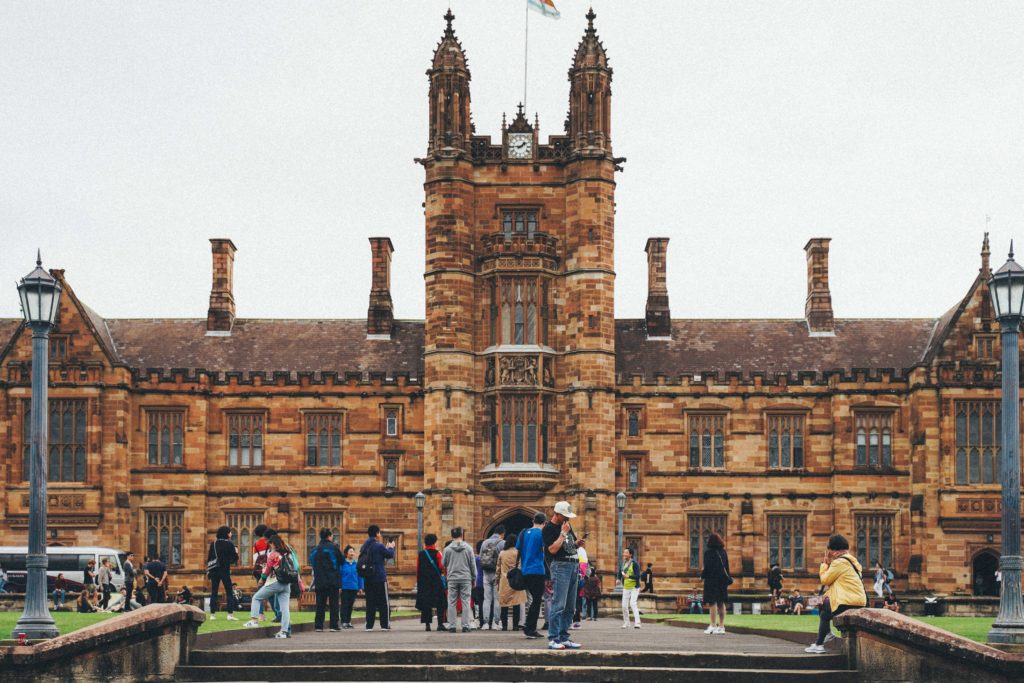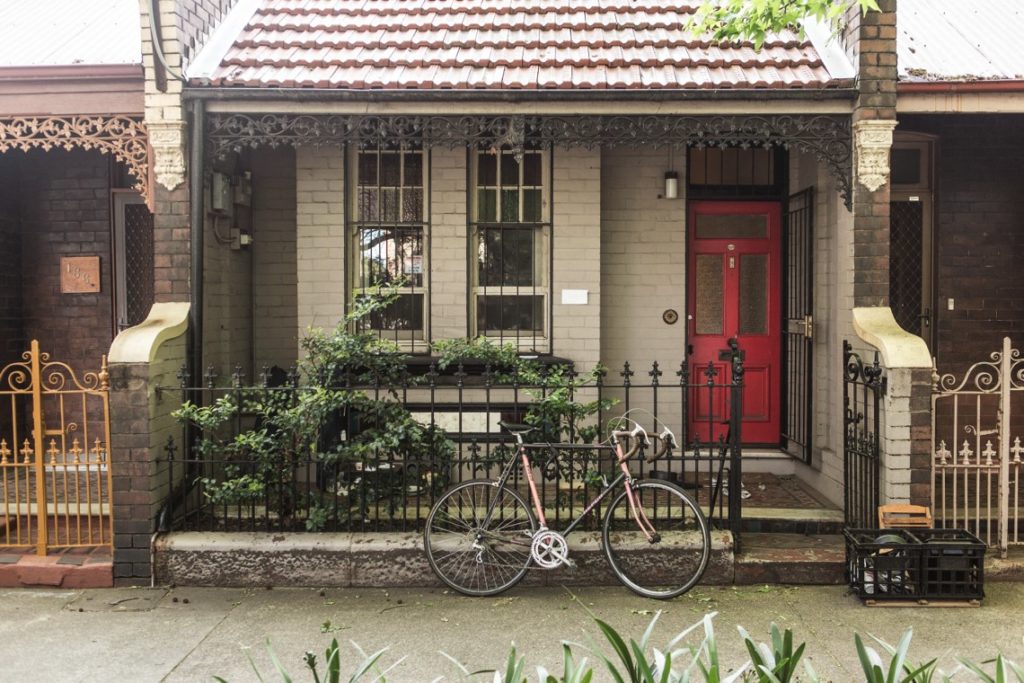Universities in the UK, USA, Canada and Australia are some of the most popular destinations for international students, with their incredibly high quality of education and easy lifestyle. If you’re keen to understand how your study experience will vary in each country, we’ve addressed some of the main differences across learning, costs, and lifestyle, as well as recent policy changes in Australia, the UK and Canada that might affect your stay.
You can easily jump to each section below:
- Recent policy changes
- Undergraduate degree structure
- Degree length
- Learning style
- Global rankings
- Fees
- Lifestyle
- Work
- Accommodation
Recent policy changes
As countries reopened their borders post-pandemic, international students flocked to study destinations at record rates. While many nations welcomed this surge, some faced challenges with infrastructure and resources to fully support the growing number of international students. In response, Australia, the UK and Canada have introduced policies to reduce the number of incoming international students to more sustainable levels.
Australia
In May 2024, Australia hit a record high of over 700,000 international students. To better manage the growth of international student numbers, the country has introduced a number of policy changes over the past year, including raising visa fees and tightening eligibility requirements. Additionally, new legislation scheduled to take effect next year will cap the number of international students, focusing particularly on institutions in major cities like Sydney, Melbourne, and Brisbane. The goal of these caps is to balance student distribution across the country, manage service pressures in larger cities, and maintain education quality by reducing dependency on international student fees.
UK
Recent changes in UK visa policies have led to a significant drop in study visa applications. As of January 1, master’s students are no longer allowed to bring dependents, resulting in a sharp decrease in dependent visa applications—from 23,800 in early 2022 to just 6,700 in the same period of 2024.
Canada
Canada has recently introduced stricter policies for international students. The government has reduced the number of study permits by 10% and extended this cap to include master’s and PhD students. For those looking to stay in Canada after graduation, new language tests are required for the post-graduate work permit (PGWP), and only specific graduates are eligible.
USA
While the USA hasn’t recently changed its international education policies, it has consistently maintained a strict approach, especially regarding work permissions for international students. Although international education is not a major focus for the U.S., the recently restrictive policies in other countries like the UK, Canada, and Australia have made it an increasingly attractive option. The U.S. does not have a cap on student visas and currently hosts about 1.5 million international students, who make up around 6 per cent of the total student body.
Although international education isn’t a specific topic in the current U.S. election, immigration is a topic of debate, and with the heated political climate in the U.S., future election outcomes could potentially lead to changes in these policies.
Undergraduate degree structure
For international students who are undertaking short-term exchange programs, the degree structure is unlikely to affect you, as you will still be enrolled at your home university and will continue to follow the same format. However, for international students looking to pursue their entire degree overseas, it’s important to note the level of flexibility or specialisation you require from your study.
USA
Higher education in the USA tends to focus on breadth of study. In the first few years of four-year undergraduate bachelor’s degrees, students choose from a number of courses across a range of subjects (including general education, such as writing and critical thinking), which forms a broad educational base. Once the requirements of the core curriculum have been met, students are usually made to choose a specific field of study – a ‘major’ – which is the focus of the last two years. This is a good system for students who want the freedom to explore different specialisations and areas of research, or are unsure of what career to pursue. More specialised degrees with tighter structures are available at certain institutions.
UK, Canada & Australia
In comparison, students in the UK, Canada and Australia will find the style of education more focused. Once you have chosen your degree, you will begin a course dedicated to this subject from day one, and you’re unlikely to study outside of this specialism. This is perfect for students who know what they want to pursue later in their career.
Degree length
Australia
- Bachelor’s degree: 3 years
- Honours: 1 year
- Master’s degree: 1-2 years
- Doctoral degree/PhD: 3+ years
USA
- Associate degree: 2 years
- Bachelor’s degree: 4 years
- Master’s degree: 2 years
- Doctoral degree/PhD: 5+ years
UK
- Bachelor’s degree: 3-4 years
- Master’s degree: 1 year
- Doctoral degree/ PhD: 3-4+ years
Canada
- Bachelor’s degree: 3-4 years
- Master’s degree: 1-2 years
- Doctoral degree/PhD: 4-6 years
Learning style
Depending on how you like to learn, you may want to consider how each country approaches classes, assignments and exams.
USA
As the USA system focuses on a breadth of subjects, courses require you to stay up-to-date with weekly readings as well as other assignments such as smaller projects, research papers, debates or oral presentations. Your course grade is based on your performance in these assignments throughout the year, as well as a final exam, which will make up a percentage of this grade.
UK
In comparison, universities in the UK tend to be more lecture-based, with fewer small-group tutorials or workshops. Students may have to complete the occasional assignment during the semester, but in some courses, there may not be any assignments at all. Instead, your entire course grade is based on one exam or essay. As such, learning is incredibly independent, with students left to develop their research skills largely unsupervised.
Australia
Australian universities tend to have a mix of these two systems, with a mix of big lectures and smaller tutorials, group work, individual assessments, and exams. You’re expected to be an autonomous thinker, with lecturers and course coordinators encouraging students to manage their time independently.
Canada
Canada’s learning style is similar to Australia’s. While your courses will likely be lecture-based, there are some that include weekly tutorials or labs. During your course, you may be required to complete smaller assessments (such as research papers or oral presentations) throughout the semester, which will contribute to your final grade. In most cases, though, the majority of your final grade will come from two major exams. The first is your midterm exam, which you’ll write at the mid-point of the semester. The second is your final exam, which falls at the end of the term.
Global rankings

While university rankings should not be the only thing you consider when choosing an institution (lifestyle and other factors unique to you are important, too), often they are good indicators of education standards and how a university is progressing.
UK
In the UK, the top-rated universities are usually (but not always!) from within the elite Russell Group. There are currently 24 Russell Group universities scattered across the UK, meaning there are plenty of options to suit your interests. If you want to pursue psychology, University College London and the University of Edinburgh are worldwide leaders in this field. Ranked best in the world in 2018 for library and information management is the University of Sheffield, while the University of Loughborough (a non-Russell Group member, but ranked the fifth-best university in the UK) was ranked highest worldwide for sports-related subjects.
USA
You’ve probably heard of the USA’s Ivy League colleges; eight private universities, including Yale and Harvard, considered some of the most prestigious in the world. However, ranking-wise, there is a huge number of USA universities that exceed some of these ‘Ivies’. Universities in the USA are consistently rated highly for computer science, with Carnegie Mellon University and the Georgia Institute of Technology some of the best in the world in the subject. For education, the University of California, Berkley, the University of Wisconsin-Madison and the University of Michigan are all rated in the world’s top 10.
Canada
The University of Toronto (UofT) is widely considered the top university in the nation, coming in at #21 in the Times Higher Education World University Rankings 2021. UofT boasts some impressive achievements; it is home to Canada’s first academic publishing house and it is the first Canadian university to surpass $1 billion in endowment. Other renowned Canadian institutions include The University of British Columbia (UBC), McGill University, McMaster University and The University of Montreal.
Australia
Australia’s Group of Eight is a coalition of world-leading, research-intensive universities. All eight (which are some of the oldest in Australia) are in the world’s top 150 universities for 2024, but younger universities continue to rise up the ranks. Monash University is the second-best in the world for pharmacy, while Griffith University is the top Australian entrant in the worldwide rankings for hospitality and leisure management. Overall, the Australian National University in Canberra is the best in Australia for physics, politics, history, geography and mathematics… just to name a few!
Fees

Regardless of which country you choose to study in, as an international student, there are a number of financial considerations you have to take into account. Not only international student tuition fees, but general living costs as well, including accommodation, university supplies and day-to-day purchases. In some cases, if you’re on a short exchange program (one semester to one year), you will pay your home university’s tuition fees and only have to worry about the cost of living. For students completing their entire degrees overseas, you will have to pay attention to specific tuition fees for non-domestic students.
The overall cost of living will differ wildly depending on the city you live in. Larger metropolitan hubs such as Sydney, London or New York are all more expensive when it comes to finding somewhere to live, buying groceries or eating out. However, regardless of where you choose to study, if you can maintain a budget and manage your finances well, you can thrive in any location. For an indicator of how much it’ll cost to live in Australia, check out our Cost of Living Calculator.
Australia
For international undergraduates in Australia, the tuition fee ranges between AU$20,000 to AU$45,000 per year for international undergraduates. The tuition fee for a Master’s course was between AU$22,000 and AU$50,000. A doctoral degree was between AU$20,000 and AU$42,000 per year.
Canada
According to Statistics Canada, the average tuition cost for international undergraduates in Canada for the 2023-2024 academic year was approximately AU$43,000 per year. For international postgraduates, the average annual tuition cost was AU$25,000.
USA
In the USA, fees vary based on whether you attend a public or private college. The average is around AU$53,700 per year for public colleges and AU$70,500 per year for private colleges.
UK
International students in the UK will find the cost varies from around AU$19,500 to roughly AU$74,000 per year for international undergraduates and around AU$12,700 to AU$105,000 per year for international postgraduates.
Lifestyle

All three countries are incredibly multicultural, with diverse cultures, unique landscapes and variety of climates that will suit you.
Australia
International students are drawn to Australia by its beachy lifestyle, with mild winters and hot summers, bizarre wildlife (have you ever seen a platypus?), passion for sports and incredible travel opportunities. Australian cities such as Melbourne and Sydney are consistently ranked among the top in the world for liveability, looking at factors like climate, safety, activities, public transport and more.
USA
The USA has something for everyone, with climates ranging between snow and skiing on the east coast, to sunny days and surfing in the west. International students can choose to live in big, bustling cities, or stick to smaller, leafy student towns. Living on-campus is the norm in the USA as well, which means you can transition smoothly into your new university life, with classes only minutes away, cafeterias providing food, and housing dorms full of like-minded students.
UK
For history, rich culture, castles, green countryside and white winters, look to universities in the UK. Everything is incredibly close in the UK, and travel is easy with the railway system. Even Europe is only a stones-throw away thanks to incredibly cheap flights. Because students often leave their hometowns for university, you’ll likely be starting the new university year on the same footing as domestic students, all ready to make new friends and explore their surroundings.
Canada
Canada is very inclusive and multicultural. In the City of Toronto, for example, the majority of residents (51 per cent) were born outside Canada. The country is also known for its cold climate. In most places in Canada, you’ll experience snowy and cold winters, with temperatures falling as low as -40 degrees Celsius with the windchill. However, many regions in Canada also have very hot summers; temperatures regularly reach 30 degrees Celsius or higher. From skiing and ice skating in winter to kayaking and hiking in summer, there are plenty of ways to embrace the nation’s natural beauty all year round.
Work

Working restrictions are quite similar across all countries, however the minimum wage is quite different in each.
Australia
In Australia, international students have the option to undertake 48 hours of work per fortnight during the semester and unlimited hours per week during study breaks. The minimum wage in Australia is a lot higher than in other countries, currently set at AU$24.10 per hour. Casual employees covered by the national minimum wage also get at least a 25 per cent casual loading. The minimum wage in Australia increases annually.
USA
In the USA, international students can work up to 20 hours per week during the semester and full-time during holidays. There are restrictions around the kind of work international students can do. On-campus work is the most freely available, but off-campus work can be undertaken if it meets certain guidelines, such as relevance to your studies. The minimum wage is around USD$7.25 per hour nationally (and has not increased since 2007), but some states have set their own minimum.
UK
In the UK, international students are restricted to 10 or 20 hours of work per week during the semester, depending on their study level. The minimum wage is £8.60 per hour for people aged between 18 and 20 and £11.44 for those aged 21 years and over.
Canada
International students in Canada are allowed to work a maximum of 24 hours per week during their studies and full-time during scheduled breaks. The minimum wage varies between provinces and territories, with British Columbia being the highest (CAD$17.40 per hour) and Saskatchewan being the lowest (CAD$15).
Accommodation

Accommodation types vary between each country, although you’ll generally find that there are plenty of different housing options available no matter where you live.
UK
In the UK, international students will likely move into halls of residence in their first year – university owned and run buildings, often divided into flats, with larger communal areas to meet other students. After settling in, it’s normal for second- and third-year students to move into flats or houses that are not owned by the university.
USA
International students in the USA will usually be placed in dormitories, where you’ll likely share a room with one or two roommates. After a year, you can decide to remain in upperclassmen dorms or find housing in the local area.
Canada
In Canada, it’s normal for first-year undergraduate students to live in residence halls (also known as dormitories). These facilities are owned and run by the university. After one year, students move out and find their own apartment or share house near campus.
Australia
Unlike the USA or the UK, many international students in Australia will live off-campus, in homestays, rental properties or managed student accommodation, although there are university-operated residences available.






